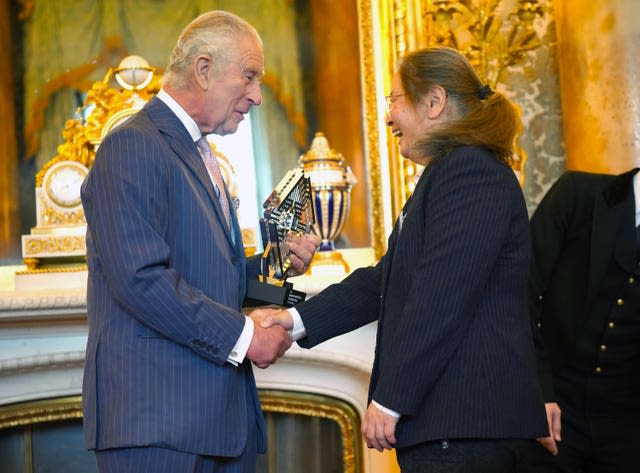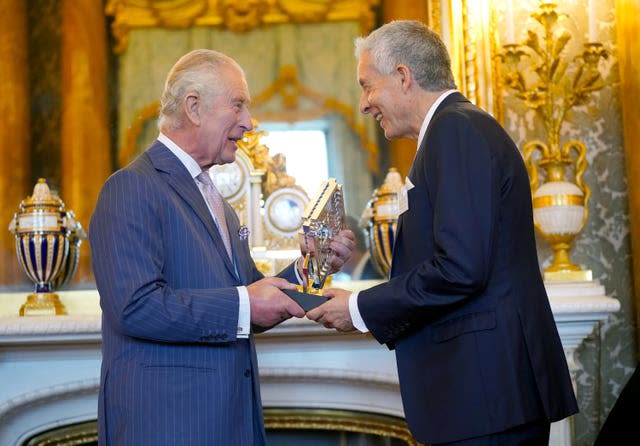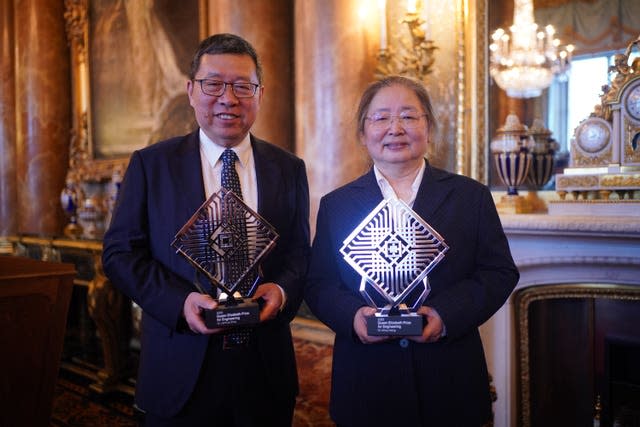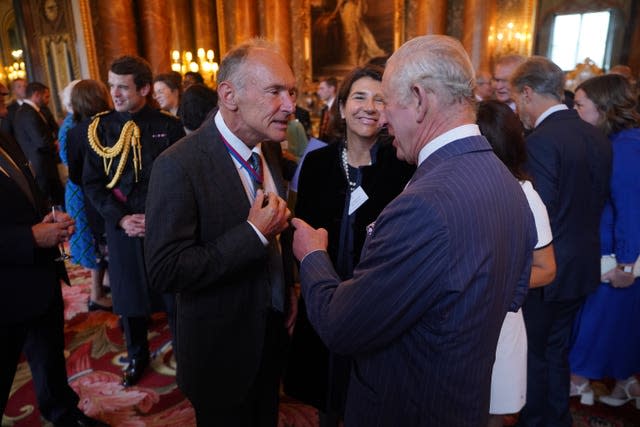King in joyful spirit as he presents engineering prizes at Buckingham Palace
The King laughed and joked as he presented the 2022 and 2023 Queen Elizabeth Prizes for Engineering at Buckingham Palace.
The Queen Elizabeth Prize for Engineering (QE Prize), first presented in 2013 by the then-Queen to the creators of the world wide web, recognises engineers responsible for groundbreaking global innovations.
This is the first time Charles has presented the prize since his coronation. He presented it three times as the prince of Wales.

Wearing a blue striped suit with black shoes, the King on Thursday presented the 2022 QE Prize to Dr Masato Sagawa for the discovery, development and commercialisation of the “world’s most powerful permanent magnet”, NdFeB, which is a crucial component in smartphones, cars and robots.
The 2023 QE Prize laureates are Professor Martin Green, Professor Andrew Blakers, Dr Aihua Wang and Dr Jianhua Zhao for the invention and development of passivated emitter and rear cell (Perc) solar photovoltaic technology, which has lowered the cost of solar panels by 80% over the last decade.
The breakthrough has helped solar power to become a reliable source of electricity around the world.

Professor Green said the King “genuinely knew” about the technical aspects of solar technology.
He told the PA news agency: “He was interested in the details of technology. He wanted to know what a passivated emitter is. He genuinely knew what he was talking about.

“This award being associated with the British monarchy, my mum is a big fan of the monarchy, particularly the late Queen Elizabeth, so she would have been delighted to know I’m here at Buckingham Palace.”
Dr Sagawa said he was “more honoured than ever” to receive the prize in the presence of the King.
He said: “Many years ago, experts in my field were convinced that magnets could not have been made with rare earth metals and iron, but I remained curious and today have been recognised for effort and perseverance in this idea.”
Dr Wang, the first female QE Prize laureate, accepted the prize with her husband Dr Zhao. She said: “Achievements in engineering can have a remarkable impact all over the world and we are very grateful that the Queen Elizabeth Prize for Engineering has selected Perc technology among many global innovations.”

Professor Blakers said: “It is an honour to be presented the 2023 Queen Elizabeth Prize for Engineering alongside academic colleagues and friends at a venue that is as renowned as Buckingham Palace.”
All winners got unique trophies designed in a competition; the 2023 trophy was designed by 25-year-old Anja Brandl from Switzerland and the 2022 trophy was designed by 19-year-old Anshika Agarwal from India.

The inventor of the world wide web, Sir Tim Berners-Lee, attended the ceremony, as did the ambassadors of Japan and Australia, and spoke with the King.


